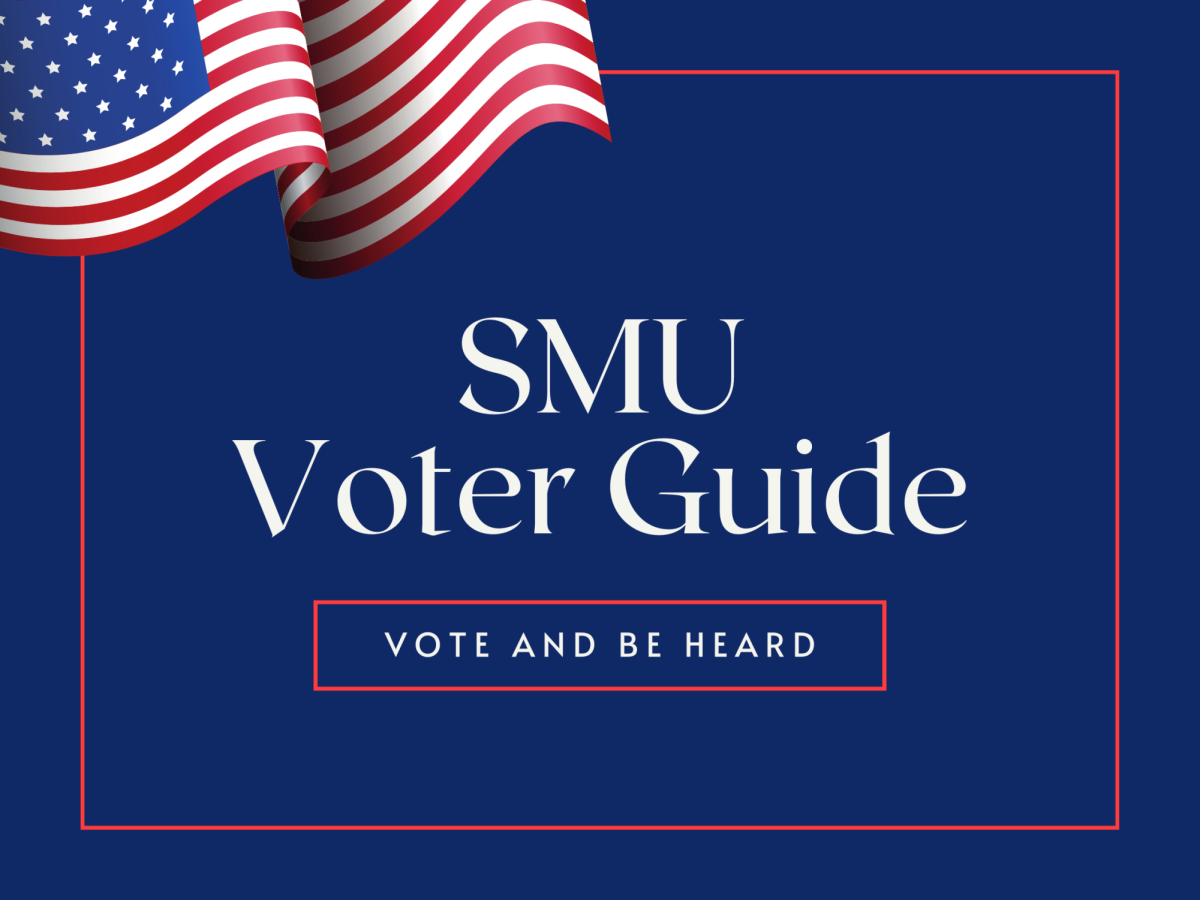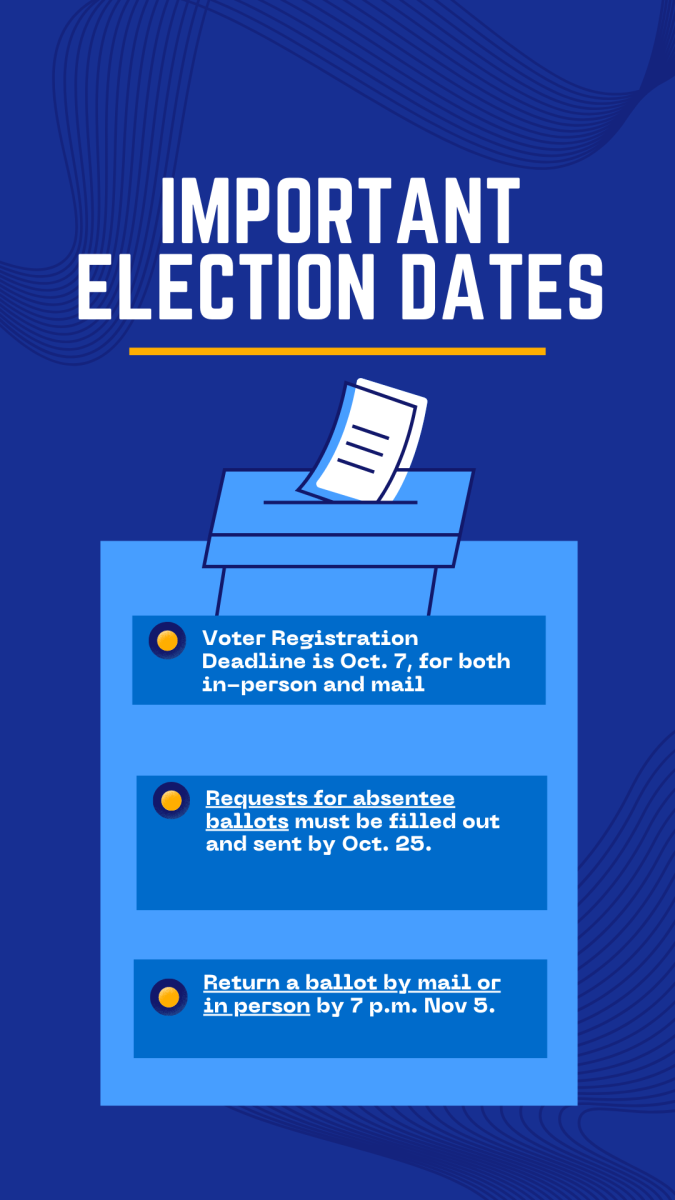Register to vote
by Clair Lapina and Elle Stewart
With the election quickly approaching, it’s time to ensure you are registered to vote. Whether you are a first-time voter or need to update your voter information, the process is straightforward.
Eligible voters must be U.S. citizens, at least 18 years old by Election Day, and meet residency requirements in their state.
If you are unsure of your eligibility, check with your local election office website. There are several ways to register.
Many states offer online registration through their Secretary of State or Department of Motor Vehicles (DMV) websites.
For those who prefer registering in person, you can visit your local election office, DMV, or attend a voter registration drive. Additionally, you can fill out and mail the National Mail Voter Registration Form to your election office.
Be sure to have the necessary identification when registering, such as a driver’s license or state ID, along with proof of residency. Requirements vary by state, so it’s important to review your state’s specific guidelines.
Deadlines to register also differ across the country. Many states close registration 15 to 30 days before Election Day, so it’s best to complete the process as early as possible. For more information or to register, visit your state’s official election website or contact your local election office.
Know your deadlines and locations
By Cambyll Francois and Caleb Gould
Election day is coming up on Nov. 5. This is everything young voters need to know to get to the polls.
Important Dates
The Voter Registration Deadline is Oct. 7, for both in person and mail registrations.
For Absentee Ballot Deadlines:
Requests for absentee ballots must be filled out and sent by Oct. 25.
To Return a ballot by mail or in person, it must be done by 7 p.m. CST Nov 5.
Early Voting Times: Oct 21 – Nov 17
8 a.m-5 p.m. Monday-Friday, Oct. 21-25
7 a.m.-7 p.m. Saturday, Oct. 26
noon – 6 p.m. Sunday, Oct. 27
7 a.m. – 7 p.m. Monday-Friday, Oct. 28 – Nov. 1
Early Voting Vote Centers
University Park UMC
4024 Caruth Blvd, Dallas, Texas, 75225
Northway Christian Church
7202 W Northwest Hwy, Dallas, Texas, 75225
For more, go to the Dallas County Elections Page.
Polling Locations
Election Day Times : Nov 5 7 a.m. – 7 p.m.
Students registered to vote with an SMU address may vote on election day on campus at Hughes-Trigg Student Center.
For Dallas county as a whole, go to the Dallas County Elections Page.
SMU also provides voting information for their out-of-state students on their website. Examples of this are: Arkansas, Louisiana, New Mexico and Oklahoma.
You need an ID to vote in Texas
By Sadie Lemkau and Ava Bates
As a student living in Texas, you’re likely aware that voting comes with certain ID requirements. But what if you are registered to vote elsewhere and attend school in Texas? The answer isn’t straightforward, and it highlights the complexity of voter ID laws.
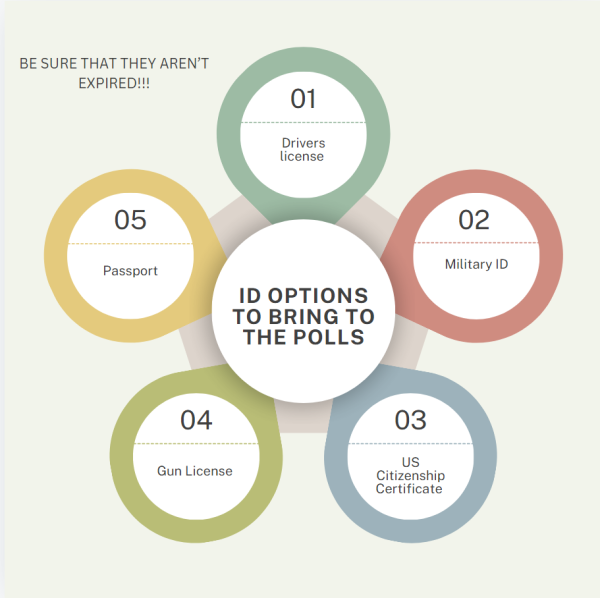
In Texas, presenting an approved photo ID is mandatory when voting in person. Acceptable forms of ID include a Texas driver’s license, a U.S. passport, or a state-issued personal identification card. However, what if your ID is from another state?
Texas does not accept out-of-state driver’s licenses for voting. If this is your only form of ID, you’ll need to obtain one of Texas’ approved forms of identification, such as a Texas ID card or a U.S. passport. If you are unable to get an approved ID, you can still vote by signing an affidavit and presenting a supporting document, like a utility bill or a bank statement with your Texas address.
Texas is often considered to have one of the strictest voter ID laws in the U.S. This strictness stems from an intent to combat voter fraud, though critics argue that it excessively affects marginalized communities, such as low-income citizens and minorities, who may struggle to obtain the required IDs.
If you are a Texas resident voting absentee from another state, the requirements don’t change. You will still need to provide a form of ID when requesting your ballot. Compare this to California, which allows voters to cast ballots without showing any ID unless they are first-time voters who registered by mail. California’s more relaxed approach reflects its aim to increase accessibility for voters.
Florida falls somewhere between Texas and California. Like Texas, Florida requires photo ID at the polls but has a longer list of acceptable forms of identification. If you lack one, you can cast a provisional ballot and then verify your ID within two days.
Ultimately, Texas stands out for its strict ID requirements, making it crucial for young voters to stay informed. If you’re a Texas voter in another state, or only have an out-of-state ID, it’s important to plan ahead to ensure your vote will count.
Voting by mail
By Brian Richardson and Jaclynn Fowler
Voting by mail, or absentee voting, differs based on the state. Vote.org is a centralized location for all voting-related rules across all 50 states, and each state’s Secretary of State website contains more in-depth information about voting.
California
Voting by mail for Californian SMU students takes one step. Because California regularly ships mail-in ballots to registered voters, Californians only need to contact their county election officials and give their temporary mailing address by Oct. 5. The California Secretary of State office’s website has the phone number, email, and address for each county’s election office. The state of California does not require a reason to vote absentee or request a ballot change.
Florida
Florida also does not require a reason for absentee voting, but Floridians studying at SMU must submit a form. Floridian students can fill out a vote by mail ballot form and mail it to their county’s supervisor of elections. County election officials must receive the absentee application by Oct. 5.
Texas
Voting absentee in Texas is similar to Florida, but voters must have a reason. Texans can only apply if they are disabled, within three weeks of giving birth, or out of their home county on election day. Texan Mustangs from outside Dallas county can fill out a vote by mail application, and mail it to their county election officials. The election office must receive the form by Oct. 25. Texas election coordinators do not accept email applications.
Anyone from outside these states can check vote.org for each state’s vote by mail policies and to request a form.
Abortion on the Ballot
By Caroline Corbin and Bella Monaco
A record breaking 10 states have placed abortion-related measures on their ballots following the overturning of Roe v. Wade in 2022. Voters in these states have a direct say on abortion rights in the 2024 elections.
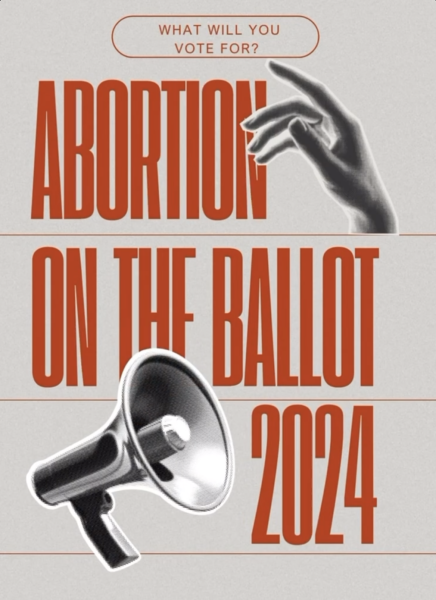
Arizona
Proposition 139 proposes to enshrine a fundamental right to abortion in the state constitution, allowing abortions up to around 24 weeks. If passed, it would overturn Arizona’s current 15-week ban.
Colorado
Initiative 89 seeks to formally protect the right to abortion in the state constitution and repeal a 1984 law that restricts state funds from covering abortion services. With no current restrictions on abortion in Colorado, this measure aims to solidify existing rights and prevent future legislative changes.
Florida
Amendment 4 could dismantle Florida’s stringent six-week abortion ban by establishing protections for abortion up until fetal viability. The measure requires at least 60% voter support, reflecting a broader debate in the state over early abortion restrictions.
Maryland
Question 1 would amend Maryland’s constitution to guarantee reproductive freedom, including the right to terminate a pregnancy. This legislative initiative reflects Maryland’s commitment to safeguarding existing abortion rights against potential future challenges.
Missouri
Amendment 3 would enshrine abortion rights up to fetal viability in Missouri’s constitution, challenging the state’s current near-total abortion ban. It also includes provisions for comprehensive reproductive healthcare, including birth control and miscarriage care.
Montana
CI-128 aims to secure the right to abortion up to fetal viability in Montana’s constitution. While abortion is currently legal up to this point, the measure would offer stronger protection against future legal changes.
Nebraska
Voters will face a choice between two competing amendments. One, “Protect the Right to Abortion,” supports abortion up to fetal viability, while the other, “Protect Women and Children,” seeks to impose restrictions on abortions in the second and third trimesters.
Nevada
Question 6 proposes to enshrine the right to abortion up to 24 weeks in Nevada’s constitution. Though abortion is currently protected up to this point, this measure aims to fortify those protections against future legislative threats.
New York
Proposal 1, an equal rights amendment, includes protections for reproductive healthcare among other rights. By not explicitly mentioning abortion, the measure seeks to safeguard against any discrimination related to reproductive health and autonomy.
South Dakota
Amendment G proposes to allow abortion in the first trimester and regulate it in later stages, directly challenging the state’s near-total ban. This measure reflects ongoing debates in South Dakota over restrictive abortion laws.
As Election Day approaches, abortion right ballot initiatives are poised to impact not only state laws but also the broader national conversation on reproductive freedom.
Know what to wear and bring
By Desi Sarraf and Sydney Schulze
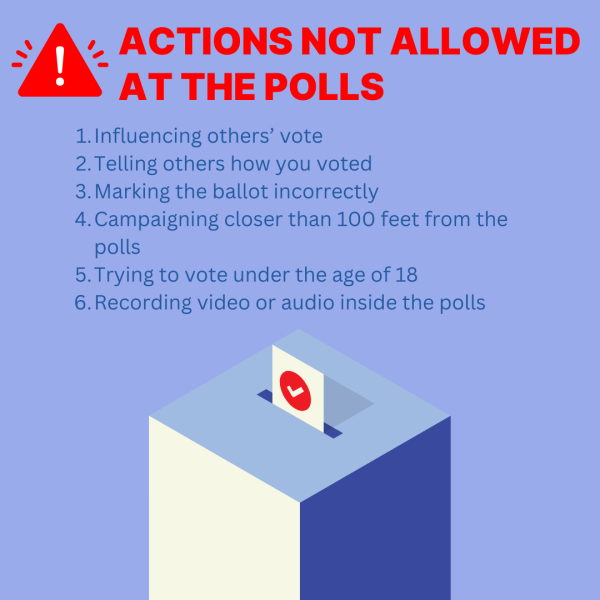 It’s important to be prepared before heading to the voting polls to ensure a smooth and trouble-free experience. There are a few rules to keep in mind and to make it as easy as possible we have outlined the most important ones.
It’s important to be prepared before heading to the voting polls to ensure a smooth and trouble-free experience. There are a few rules to keep in mind and to make it as easy as possible we have outlined the most important ones.
First and foremost, having a valid, up-to-date ID is crucial for being able to vote as it ensures your eligibility and prevents any possible issues at the polls.
Some examples of acceptable forms of ID include a driver’s license, state-issued ID, passport, elections identification certificate, US citizenship certificate, or military ID. In the rare case that an individual does not have an acceptable form of ID there are a few possible supporting forms of ID such as a government document that shows the voter’s name and an address, current utility bill, bank statement, government check, paycheck, handgun license, or certified birth certificate.
Additionally, there are guidelines regarding attire at the polls, including restrictions on wearing clothing or accessories that promote specific candidates or political parties within a designated distance from the polling location.
A quick tip: if you are unsure, don’t wear it! Bringing electronic devices, such as phones, cameras, tablets, or recorders, into the polling area is prohibited to protect voter privacy and maintain the integrity of the voting process.
Lastly, it is prohibited to try to influence others’ vote, share who you voted for, or mark the ballot incorrectly. By sticking to these simple rules, you will be organized and ready to focus on casting your vote and making a difference.

Scan this QR code for more information on voting in the upcoming election.
This guide was compiled by journalism students in the Reporting on Human Rights class at SMU.



